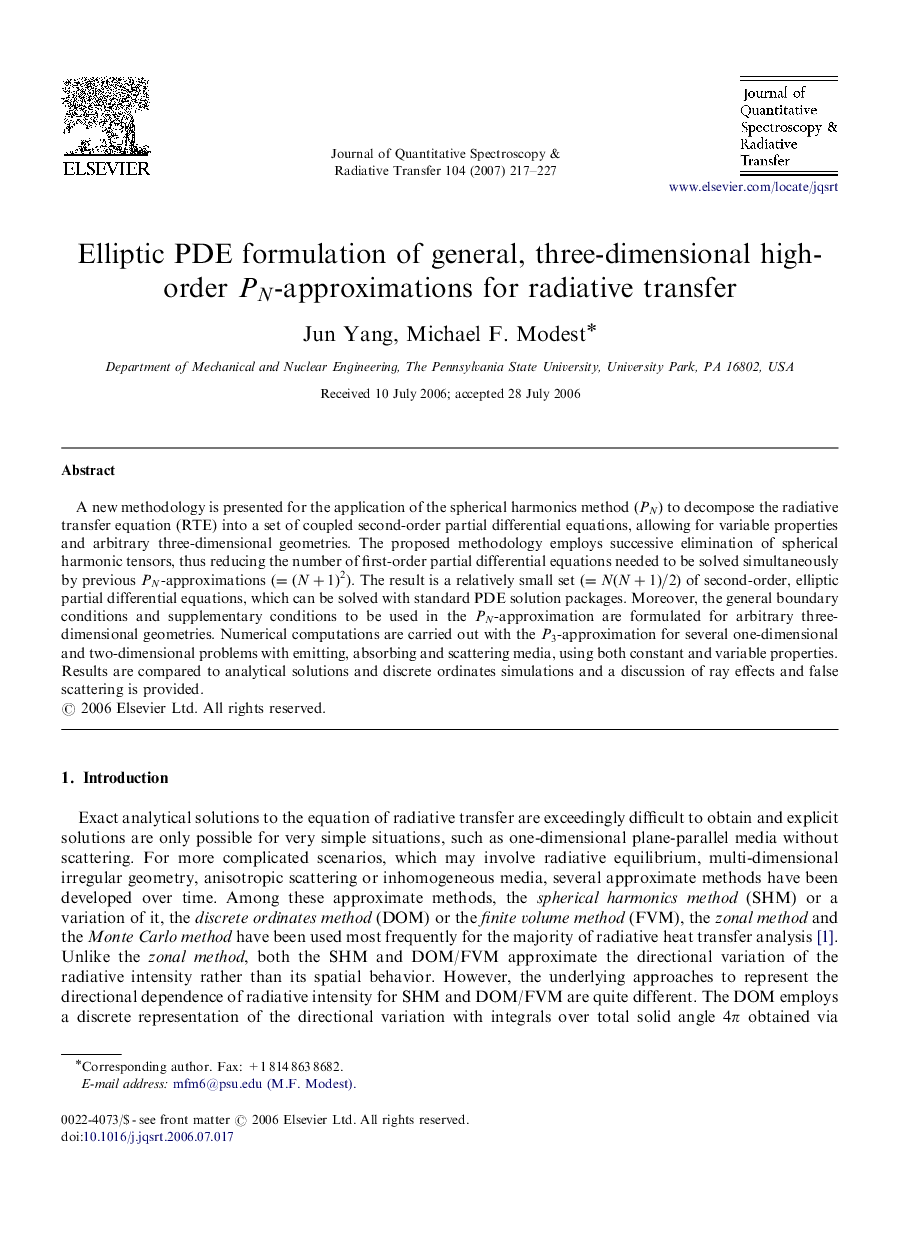| Article ID | Journal | Published Year | Pages | File Type |
|---|---|---|---|---|
| 5430828 | Journal of Quantitative Spectroscopy and Radiative Transfer | 2007 | 11 Pages |
A new methodology is presented for the application of the spherical harmonics method (PN) to decompose the radiative transfer equation (RTE) into a set of coupled second-order partial differential equations, allowing for variable properties and arbitrary three-dimensional geometries. The proposed methodology employs successive elimination of spherical harmonic tensors, thus reducing the number of first-order partial differential equations needed to be solved simultaneously by previous PN-approximations (=(N+1)2). The result is a relatively small set (=N(N+1)/2) of second-order, elliptic partial differential equations, which can be solved with standard PDE solution packages. Moreover, the general boundary conditions and supplementary conditions to be used in the PN-approximation are formulated for arbitrary three-dimensional geometries. Numerical computations are carried out with the P3-approximation for several one-dimensional and two-dimensional problems with emitting, absorbing and scattering media, using both constant and variable properties. Results are compared to analytical solutions and discrete ordinates simulations and a discussion of ray effects and false scattering is provided.
